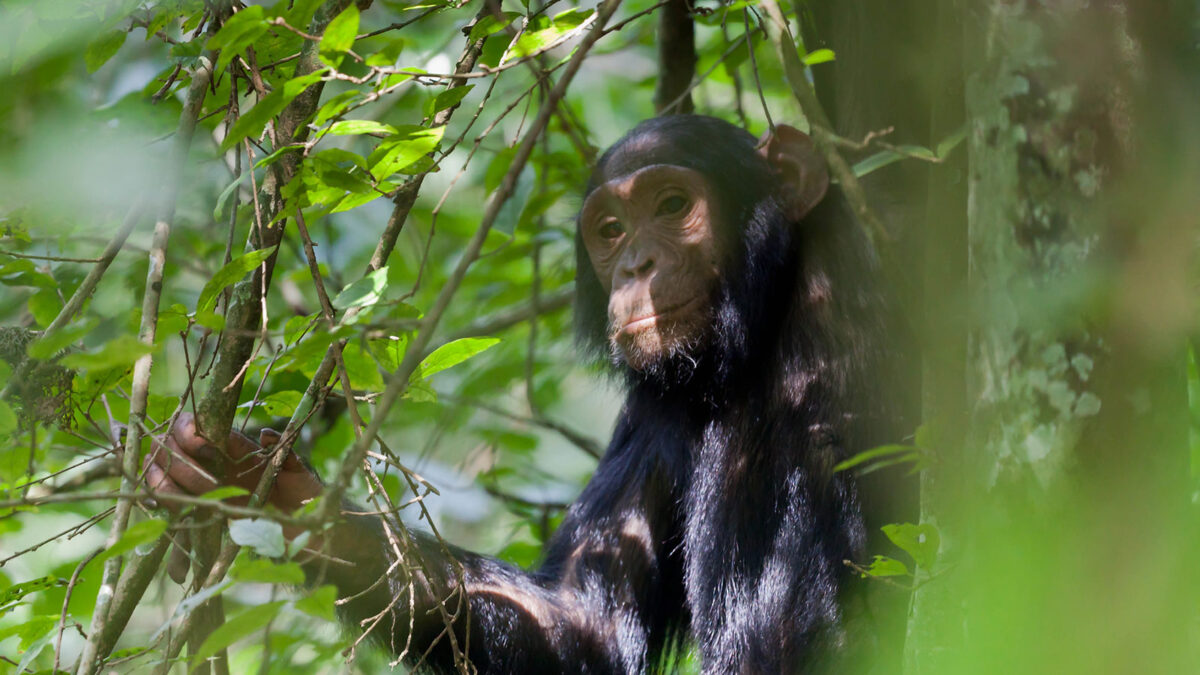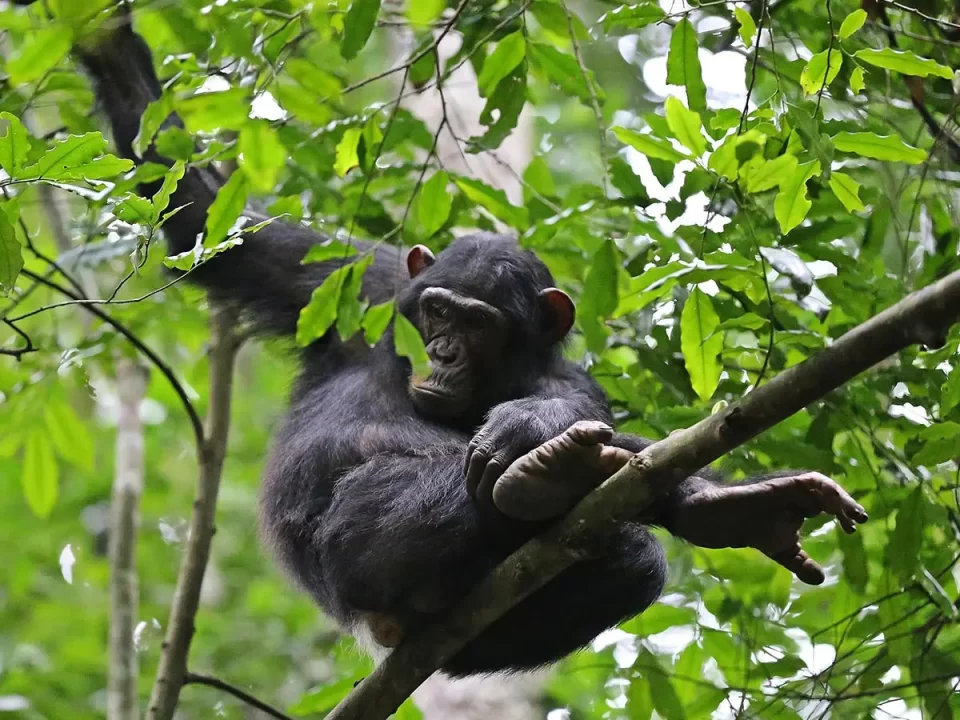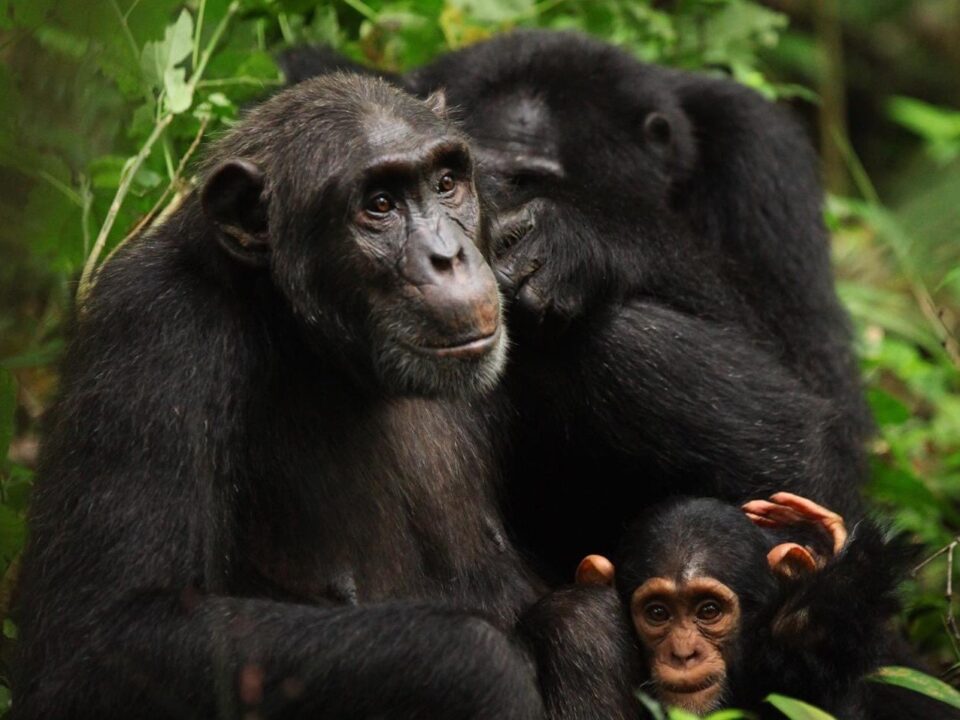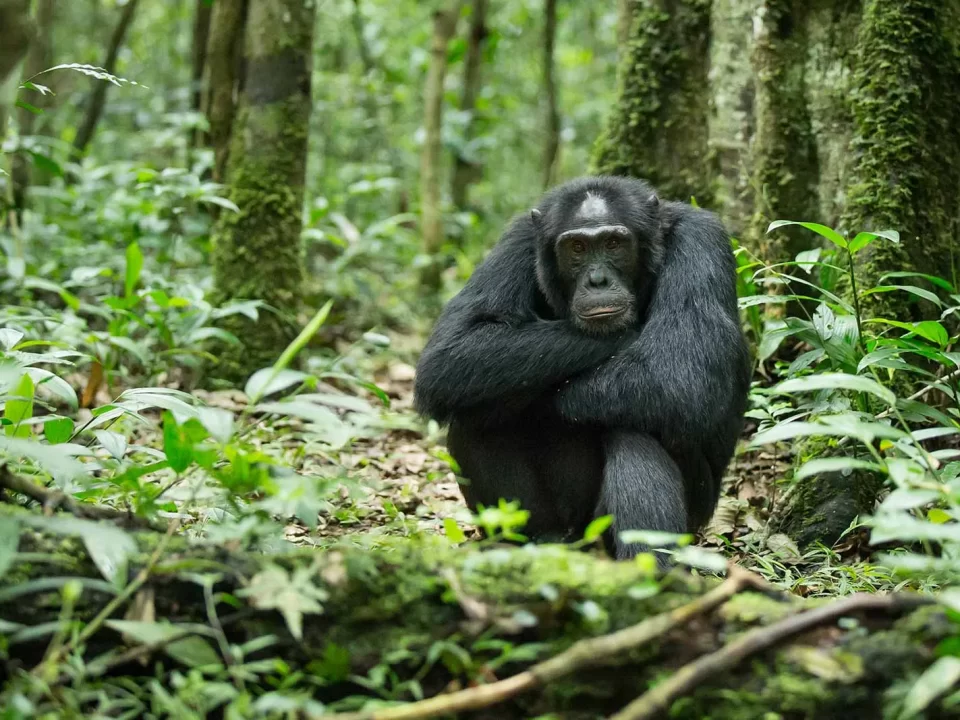Why is tracking Chimpanzees in Uganda a great experience?

Uganda Gorilla Tracking & Ngamba Island Safari
January 5, 2024
Murchison Falls Ferry Crossing
January 5, 2024Why is tracking Chimpanzees in Uganda a great experience?
Why is Tracking Chimpanzees in Uganda a great Experience? — While Mountain Gorillas may dominate the limelight, on-foot Chimpanzee tracking in Uganda offers an equally enthralling wildlife encounter, often overlooked in travel media. Delving into the heart of African forests to track our closest relatives is, in fact, one of the world’s most thrilling wildlife experiences, and it comes at a fraction of the cost compared to encounters with the larger Mountain Gorillas.
Amidst the Equatorial forests of Africa, home to approximately 300,000 Chimpanzees, witnessing these primates in their natural habitat is a rare privilege. Kibale Forest National Park in Uganda stands out as one of the best places to embark on this adventure, harboring five habituated Chimpanzee communities within easy walking distance.
Chimpanzees in Africa: Our Closest Genetic Relatives
Chimpanzees, living in communities of up to 150 members, form smaller subgroups led by an alpha male. While their day involves activities high up in the treetops like grooming, sleeping, and feeding, it’s when they descend from the canopy that observers have the best chance of a close encounter.
Sharing around 98% of our DNA, Chimpanzees are our closest genetic relatives. Dr. Jane Goodall’s groundbreaking work in Tanzania’s Gombe National Park in the 1960s revealed astonishing human-like behavior among Chimpanzees. Dr. Goodall’s process of habituation, where she spent time with the Chimpanzees, paved the way for scientists and ordinary visitors alike to get remarkably close to these incredible creatures.
Kibale Forest National Park: A Chimpanzee Haven
Home to around 1500 Chimpanzees across 13 communities, Kibale Forest National Park in Uganda boasts several successfully habituated groups. The Kanyanchu community, with over 120 individuals, is led by the alpha male Totti. Visits to this community occur in the mornings and afternoons, lasting 3-4 hours with up to one hour spent with the Chimpanzees. A tracking permit costs USD200 per person per trek.
For those seeking a more extended encounter, Kibale Forest National Park offers a Chimpanzee habituation experience at USD250 per person per trek. This option allows more time with one of the two communities undergoing a two-year habituation process. Brisk walking is part of the experience, as Chimpanzees can move swiftly, promising a more intimate encounter.
What to Expect from Your Chimpanzee Experience?
The half-day tracking adventure begins with a briefing, providing insights into the Chimpanzees and essential dos and don’ts in the forest. Safety is a priority, emphasizing the avoidance of close contact due to the risk of disease transmission between humans and Chimpanzees.
Separated into groups of up to seven, each accompanied by a guide armed for emergencies, visitors then venture into the forest. The trek involves navigating through undergrowth, ducking under low branches, and listening for the cries of Chimpanzees above. The distinctive screeching marks their presence, leading to a sub-group’s discovery. The magic unfolds when some Chimpanzees descend to the ground, providing an up-close encounter.
Face to Face with Chimpanzees: An Unforgettable Encounter
The first, up-close Chimpanzee encounter is unparalleled. The sheer excitement of being just feet away from these completely wild creatures, witnessing their intelligence through poses, expressions, and interactions akin to humans, creates an intense buzz. Their bright eyes, posing for cameras, and the possibility that they may be enjoying the interaction as much as the observer make this experience truly magical.
While Mountain Gorillas captivate Uganda’s attention, a face-to-face encounter with wild Chimpanzees is equally exhilarating. The terrain is more manageable, the forest less dense, the Chimpanzees easier to locate, and the cost significantly more affordable. These factors position Chimpanzee tracking at the top of the must-see list.
While Kibale Forest National Park is a prime Chimpanzee tracking destination, opportunities also exist around Queen Elizabeth National Park, Murchison Falls National Park, and smaller forest reserves. However, Kibale Forest’s substantial Chimpanzee population makes it Uganda’s premier Chimpanzee tracking destination, boasting a remarkable 90% chance of sighting these fascinating primates.




